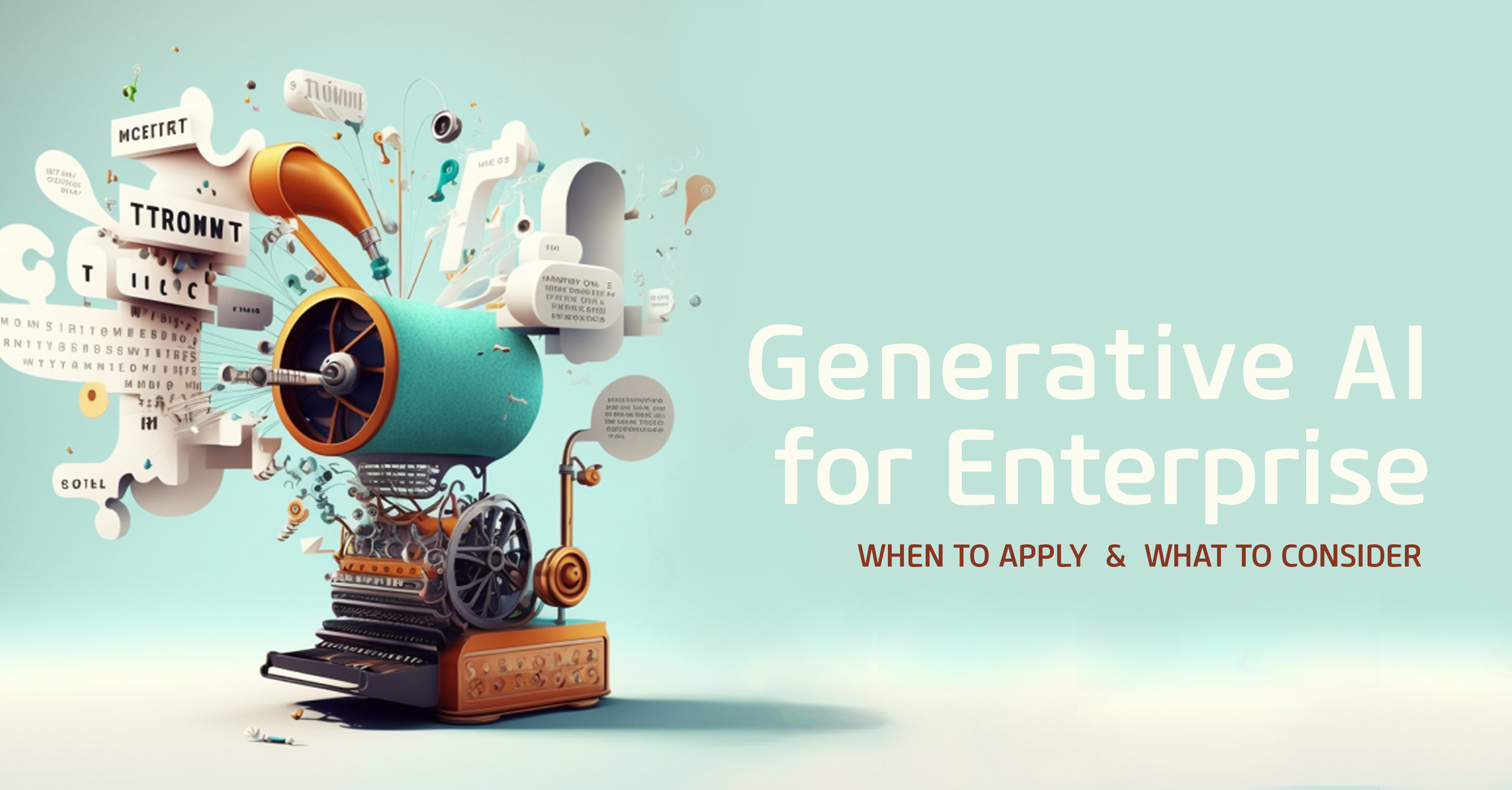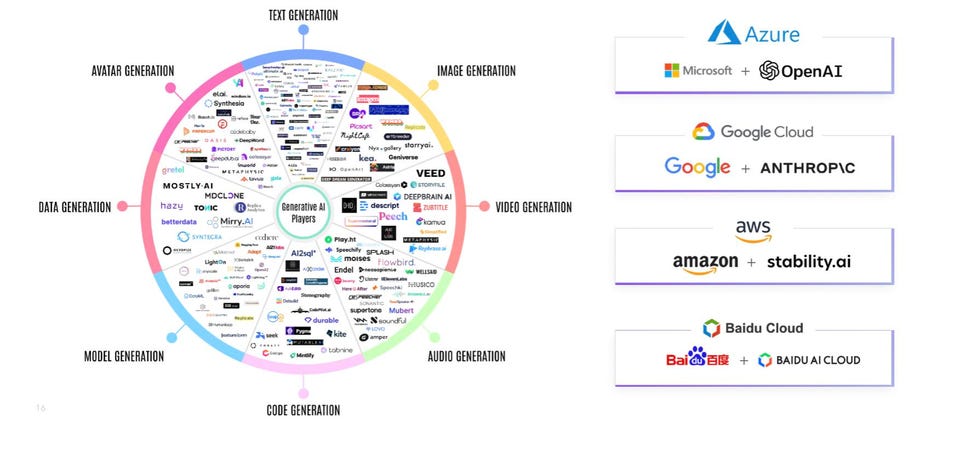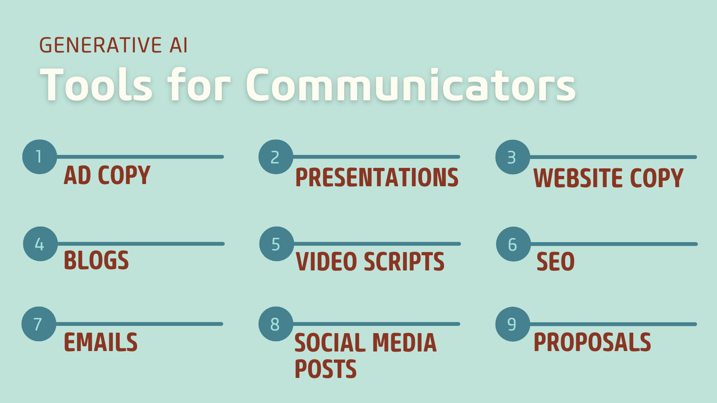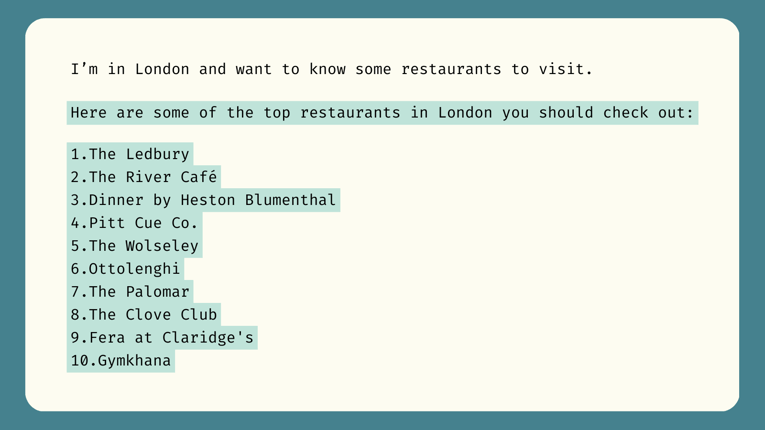Jamie Michie & Jordan Wiseman
Generative Artificial Intelligence (GenAI) is a powerful subset of AI technologies that enables computers to generate content that is convincing and probably unique. This content could range from artwork to music, poetry, text, video, dialog, and even computer code. While some may assume that these AI systems possess a creative spirit, this is not the case. GenAI is a tool which emulates the work of a human craftsman by creating content.
We are seeing explosive adoption rates for GenAI in our world. Some are calling it an epoch; others say it is one of the most significant exponential disruptors since the Internet.
We are reading about it everywhere, being targeted by AI-generated ads, selling generative AI tools, and being encouraged to enjoy its benefits…it’s a lot of hype, but is there lasting value behind it?
We think so.

Enterprises can make the most of GenAI’s capabilities by weaving it into existing processes for the creation of innovative products, services, and experiences. The creative and responsible use of generative AI can help enterprises stand out from the competition, gain an edge in the market, and ultimately increase their bottom line.
It can also help them develop better customer experiences, discover new insights and opportunities, and increase efficiency.
 Types of Generative AI - Source: Journey
Types of Generative AI - Source: Journey
Online’s Innovation Lab has been following the GenAI topic closely. We recently hosted a session for internal stakeholders that discussed the enterprise personas, Developers & Communicators, that can benefit the most from this fast-paced technology. Our security team weighed in on this topic as well, and has included some very important considerations for enterprise as well.
Before we explore the personas and examine the security aspects, your organization should consider approaching this new technology with a collaborative perspective.
Establish a Discernment Process
Executives at companies considering GenAI should look for quick wins to pilot the technology, such as identifying the parts of their business where the technology could have the most immediate impact. There are several perspectives to consider, and more questions than answers while the world is adapting to this onslaught of generated content. Taking a considerate approach to how your organization implements and tests this technology will provide the longest lasting value.
To get started, establish buy-in with key members of your organization and assemble a cross-functional team. This may include business development leaders and stakeholders, legal experts, and data science practitioners.
According to McKinsey, these five questions will help guide you on your initial exploration:
- Where might the technology aid or disrupt our industry and/or our business’s value chain?
- What are our policies and posture? For example, are we watchfully waiting to see how the technology evolves, investing in pilots, or looking to build a new business? Should the posture vary across areas of the business?
- Given the limitations of the models, what are our criteria for selecting use cases to target?
- How do we pursue building an effective ecosystem of partners, communities, and platforms?
- What legal and community standards should these models adhere to so we can maintain trust with our stakeholders?
Enterprise Communities that can Benefit from GenAI
To help simplify the vast applications, industries, and examples of who can benefit from this impressive technology, we have identified two key end-user personas, as Developers and Communicators.
Developers

“The hottest new programming language is English.”
-Andrej Karpathy, Head of AI for Tesla
Large language models store knowledge in a language-neutral way and can converse about it in a variety of languages. Thus vast amounts of single-language content can be used in many languages.
Within Online’s Innovation Lab we are actively piloting GenAI for development purposes. For example, we’re:
- Generating new code to make development faster
- Using GenAI to explain and check existing code for errors
- Creating scaffolding for application components without needing existing code snippets
- Rapidly prototyping modules, functions, and the infrastructure code needed or deployment
- Skipping search and going directly to documentation-supporting implementation samples
- Solo-Pair Programming with an intelligent fact-based partner aware of design patterns and industry-standard frameworks
- Using AI-generated code to satisfy test requirements and speed Test Driven Development
- Creating Automated Unit Tests for a software component
- Automating security inspection policy compliance checking, and bug analysis of software components
- Conducting Code Quality Analysis including automated AI-enhanced code review and coding standards enforcement
- Helping reinforce standards as generated code already follows each project’s style and format guides
Communicators

This comic, created in 1923, depicts the artist making plans to spend time fishing with his friends Frank & Roy, instead of staying in his print shop and manually completing his work.
Instead, the ”Idea Dynamo” works together with the ”Cartoon Dynamo” to mass produce comic illustrations on the artist’s behalf.
What inspired his poignant prediction? The desire to do more with his time!
100 years ago, it was a mere fantasy that an electrically charged tool could be left to automate a day’s worth of work. Today, it’s a very rapidly evolving reality.
Much like the comic illustrates, Generative AI is a tool that can add value to your current projects, maximizing your efficiency and increasing the volume of output.
GenAI Tools for Communicators
One of the main uses for GPT3 and other large language models, (LLMs) is to assist with writing.
One of the most popular or well-known Generative AI products, is ChatGPT, a sub-product of OpenAI. It surpassed 1 million users in just 5 days. The current version, GPT3, is trained on 175 billion parameters or data points. Coming soon, GPT4 will be made available, and is powered by over 100 trillion parameters.
What does that even mean?
Loosely translated, the next version will likely have a deeper understanding of language and be able to generate more natural sounding outputs. Additionally, GPT4 is expected to have better training algorithms and techniques which will help it learn more quickly and accurately, enabling users to expect a higher caliber of support for summarization, question-answering, and dialogue.
For all of the job types that could fall under the category of Communicators, the types of writing projects could include ad copy, presentations, website content, blogs, video scripts, emails, social media posts, proposals, SEO, and many more.

The above examples, when generated via AI, should all be considered first drafts. A draft ad, a suggestion towards a blog, a starting point for your email. If you simply use what is generated as your end result, you are not using the technology responsibly.
Your human input is a critical component to the desired output, so your perspective and your experience are required to make the content as compelling to other humans, as possible.
Whether it’s content creation, simplification, translation, optimizing, and more- there’s a tool for that. As advanced and impressive as some AI genning platforms are, it’s important to add your valuable human perspective to the final version.
Personalize to what you end up using. ‘Gen Responsibly!’
Optimizing Your Generated Outputs
One of the most vital considerations for end-users when utilizing generative AI, is your prompt.
Prompts are the veritable foundations of new language tools, including GPT. How well you can prompt defines the absolute value you will obtain from these new language models.
Prompting, prompt crafting, prompt engineering, and prompt mastering.
The more detail and context you provide, the higher quality of generated copy you will receive.
This first example using Chat GPT shows a very simple response to a simple question, or prompt.

But what if you really wanted a recommendation?
Change how you have structured your question by incorporating context.

The level of detail, perspective, and context you provide will allow the platform to provide you, with a more detailed response. Likely one that is closer to what you were looking for.
It’s important to use the same prompting mindset when asking other platforms to help with your visual creations.

If you were to ask a platform like ChatGPT to help create some of these ideas, it could describe them to you. It could produce code on how to develop them perhaps, but there are many other platforms that will be better suited to solving your specific request.
Midjourney, Stable Diffusion, or Dall-E, some of the more well-known image generators, could definitely draft up a static version that you could use as reference for eventually building some of the above examples, but thankfully there is such an incredible demand for assistance with business templates and content creation, there are now newly established platforms gaining popularity on a daily basis.
Where do you find the tools?
Rather than list off the now thousands of GenAI tools available for your organization’s Developers & Communicators, the directories below should be considered as valuable resources.


If you look at the directory, There's an AI for That, it used to list new resources by year, and now it's by month.
Futurepedia has an even more impressive library of AI tools, and updates daily. It currently features over 1000 AI tools, in 50 categories, with 13 new tools added just today. That’s almost 400 more tools than it listed just last month.
By the time you read this blog, there will be more to choose from.
Legal Risks, Problematic Usage, and Other Considerations

As we’ve discussed, GenAI is already, and will increasingly become, a valuable tool for most organizations. However, there are still several unanswered questions and “gotchas" about its use that should be considered. Let’s explore a few of those now.
The first concern with GenAI systems is that any data or information you input to complete your task is collected by the company that is hosting the model. In theory, and depending on the specific terms and licensing of the model you’re using, they’ll use your data to improve how the model functions.
The information you provide may no longer be confidential. You should not provide any information, especially proprietary IP, other sensitive company data, or PII, without a careful review of the terms, licensing, and other relevant agreements.
Copyright Concerns
Since these AI systems are not truly creative, who owns the content they are prompted to generate?
If you consider these systems tools, then like any tool, the works crafted by them belong to the craftsman, i.e., the user. But AI systems are trained. They’re shown examples of existing content and develop a statistical model based on the frequency and “relationships” between pieces of the content they’ve seen. Where certain subjects have many and varied relevant content, the AI is likely to generate relatively unique variations.
Whether that means the AI is deriving or reproducing copyrighted works, is an interesting and complex legal and technical question, which is still ongoing and yet to play out.
While society is looking to answer these questions, since it’s such a new topic, we may not have the same answer everywhere we look. In the meantime, it will be important for businesses to use this technology responsibly, and recognize that AI-generated content should to be reviewed, and also should be considered “first” drafts, which may need modification, editing, or re-creation to avoid problems.
Which brings us to another issue...
Accuracy and Timeliness
Most GenAI systems are trained with data captured at a certain point in time. They’re updated as often as possible, for new models, new AI platforms, or based on how efficiently new data can be consumed.
But training takes time and is expensive. And releasing newly trained models involves a product release process that means the AI you want to use may not “know” about the latest news, recently posted content, cutting-edge research papers, and other “current events”.
So, the answers to your questions, or the content generated from your prompts, may be outdated or incorrect. There are “editor” and “guardrails” systems for some GenAI systems. For example, GPT’s web interface has a filter which will intercept and prevent the generation of some classes of objectional or offensive content. But these editors may be hampered by a lack of its own access to the Internet and an inability to interpret the intention or accuracy of the inputted prompts or the generated output. For now, a person should review and QA the generated content, as you would for any content your team makes.
Fraud and Deepfakes
Needing to identify fake or AI-created content is not itself a new problem. It’s akin to concerns schools and research journals have had in detecting and weeding out plagiarized content. Only, with AI, it can be much harder to detect “cheating” when the content doesn’t exactly match the original. At best, this can make attribution and citation difficult, if not impossible. At worst, it may be unclear or impossible to determine if AI generated copyrighted or licensed content.
This issue is worse now, however, as GenAI tools have been made easy to use. The ability to create fake content to mimic real people, their art, or even their likeness and voice, has drastically lowered the costs for malicious or unscrupulous folks to use these AI systems for fraud.
We all have seen lots of these AI-assisted fakes used to damage reputations via social media. Until now, these were mostly targeted at political figures, famous people, or large companies. But now, the easier and cheaper ability to create fake content will make this a bigger problem for everyone.
Thankfully, there are some efforts to fix this. The biggest one is probably the Content Authenticity Initiative. Many of the largest creators and AI companies have collaborated to create an SSL-browser-padlock-like signal for content, allowing users to discern whether the content is authentic or unique.
These risky realities around fraud and deepfakes make the use of Generative AI for both Developers & Communicators, a topic that will continue to require responsible use.
Real Security Concerns
Which brings us to the final set of concerns we’ll discuss today: the bad guys. Just like GenAI makes it cheaper and easier to create fake content, these systems also make the creating of phishing messages, malware, and other tools, techniques, and practices for the bad guys much more accessible.
For one thing, the ability to have AI generate code means that malware can be written by folks who don’t know how to write software! It used to be that real hackers could write the best (or quickest) software, and some would sell malicious programs to less capable bad actors (e.g., script-kiddies). Now, AI systems can write the code for anyone who wants new ransomware package, or a remote-control system, or a new program for stealing financial data or passwords! The bad guys don’t need to be hackers or crackers, they can be anyone who wants to get into cybercrime.
In addition to making malware, AI systems can rapidly generate variations of phishing messages, using data known or supplied about a target to “personalize” attacks. They can personalize malware the same way, allowing for rapid and adaptive changes. We saw how new COVID and flu variants increase infections; GenAI now does that for computer viruses. Similarly, they’ve also shown an effective ability to create accurate password list variations based on samples of breached passwords.
GenAI is reducing the skills needed and costs involved with committing crimes online.
The good news is that the most effective ways of protecting against these new threats are the most important security practices you’re already doing:
- Continue to keep your systems, all of them (even the hard ones), fully patched and up to date
- Continue educating your teams to be wary of things they see online and via email
- Limit access to your systems as much as possible to only what access is needed, and only when that access is needed
As more technology is developed and use for positive business applications, there will always be negative side to consider, which typically involves how it can be utilized by criminals. The best way to mitigate the likelihood of being attacked, continue to be mindful of your cyber-hygiene so it is best prepared to protect you from cybercrime attempts.
As GenAI continues to gain traction with enterprises across the globe, organizations should continue to be mindful of potential security implications with their use. While GenAI has many potential benefits, such as optimizing customer experiences and driving new revenue, the technology must be deployed intentionally, and responsibly.
Our Innovation Lab team here at Online is here to help organizations like yours make the most of GenAI, while applying the appropriate measure of caution and curiosity.
If you have any questions or would like to learn more about generative AI and its enterprise use cases, please do not hesitate to reach out.




Submit a Comment